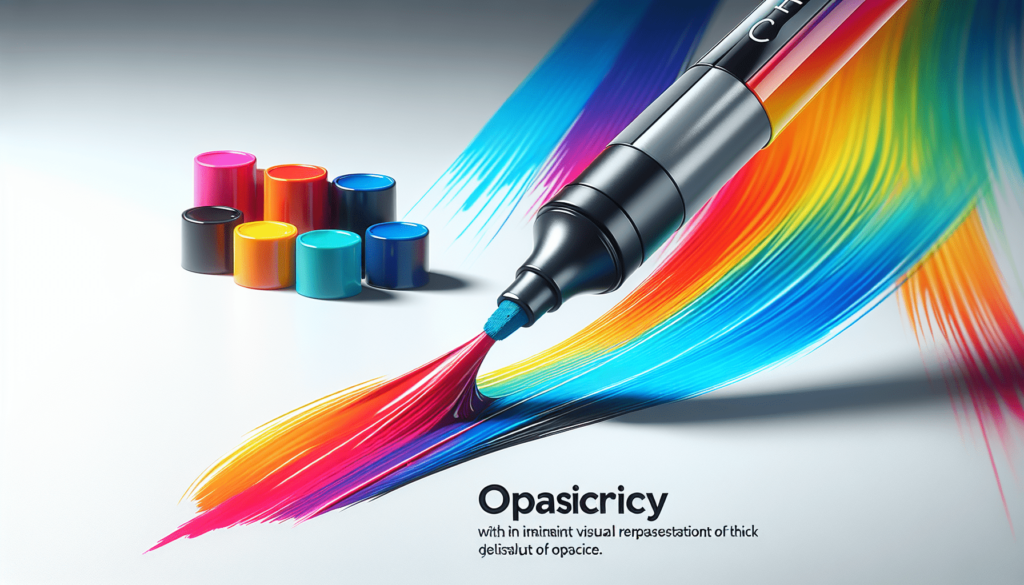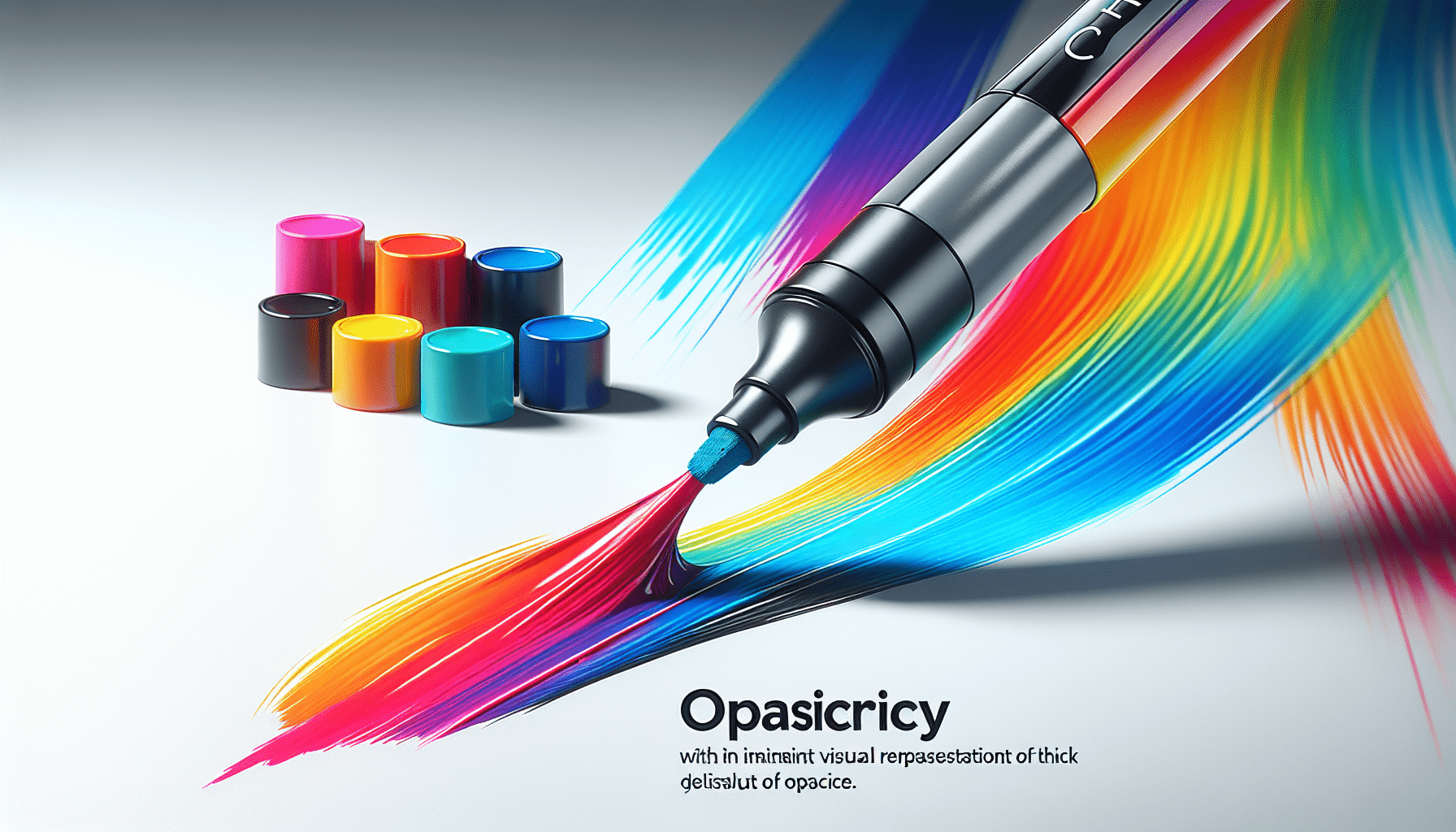Have you ever wondered why paint markers are not transparent? In an age where you can find multiple types of markers for any given task, understanding the properties and functionalities of each can enhance both practical usage and artistic endeavors. This article aims to provide comprehensive insights into why paint markers possess their characteristic opacity.

Understanding Paint Markers
Paint markers are widely used in various applications, from industrial labeling to creative crafts. They are essentially the tool of choice when you need a durable, non-fading mark on almost any surface. But their operative power lies not just in their versatility but also in their opacity.
Composition of Paint Markers
A paint marker typically consists of several key components:
- Pigments: These are fine solid particles that provide color.
- Binder: This component helps the pigment stick to the surface.
- Solvent: The solvent liquifies the pigment and binder, allowing them to flow out of the marker and onto the surface.
This combination results in a medium that sits atop a surface rather than blending into it, giving its dense and opaque finish.
Opaque vs. Transparent Mediums
Understanding the distinction between opaque and transparent mediums is pivotal. Transparent mediums, such as watercolors or alcohol-based markers, allow light to pass through them, causing an overlap of colors and creating depth. In contrast, opaque mediums completely block light, offering a solid color representation on the surface.
| Opaque Mediums | Transparent Mediums |
|---|---|
| Acrylic Paint | Watercolors |
| Oil Paint | Alcohol-based Markers |
| Enamel Paint | Ink Washes |
| Paint Markers | Ink Sticks |
Why Opacity Matters
In many uses, especially industrial applications, the opacity of paint markers ensures that markings are visible under various conditions. Whether marking on metal, glass, or plastic, the color must remain stark and clear, unaffected by the background. This inherent opacity is what makes paint markers invaluable in settings such as construction, automotive, and even in arts and crafts.
Chemical Composition
The specific chemical compounds used in paint markers contribute significantly to their opacity. Unlike other markers that use dyes, paint markers often contain pigments suspended in a carrier medium.
Role of Pigments
Pigments are tiny, insoluble particles that impart color to a material. Because they are not dissolved but suspended, they offer higher opacity. Common pigments used include titanium dioxide (for white), carbon black, and various synthetic dyes for other colors.
Types of Binders
Binders function to glue the pigment particles to the surface. Different types of binders can be used depending on the requirement for durability, flexibility, and resistance to environmental factors. Common binders include acrylics, alkyds, and polyurethanes, each providing unique properties but also contributing to the non-transparent nature of the marking.
Solvent’s Role
The solvent in a paint marker also plays a critical role. Typical solvents include alcohols and acetates, which evaporate quickly, leaving behind a solid, opaque mark. The rapid evaporation ensures that the pigment doesn’t dissolve or spread, maintaining its opacity.
How All Components Interact
The interaction between pigment, binder, and solvent ensures that when the paint marker is used, it produces a consistent, opaque mark. The pigment provides the color, the binder attaches it firmly to the surface, and the solvent allows it to be applied smoothly and be dried quickly.
Applications Requiring Opacity
The non-transparent nature of paint markers makes them particularly suited for specific applications. Here are some key areas where their opacity is crucial:
Industrial Uses
In manufacturing plants, warehouses, and construction sites, the clarity and durability of markings are vital. Paint markers ensure that measurements, labels, and safety instructions remain visible regardless of the material’s color or texture.
Artistic Endeavors
Artists often rely on the opacity of paint markers for bold colors that stand out against any background. Unlike other markers where layering is necessary to achieve intensity, a single stroke of a paint marker can provide a vivid and bold statement.
Glass and Metal Applications
Both these surfaces pose a challenge for transparent mediums due to their reflectivity and smoothness. Paint markers, with their thick, opaque ink, are ideally suited for marking glass or metal as they remain visible and adhere well without running off or fading.
Automotive Applications
From marking tires to detailing work, automotive uses often require durable and visible marks that can withstand environmental factors such as water and heat. Paint markers deliver on these needs due to their chemical compositions designed to handle such conditions.
Paint Markers vs. Other Markers
It is crucial to differentiate paint markers from other types of markers to fully appreciate their non-transparent quality. Let’s compare paint markers with water-based and alcohol-based markers.
| Aspect | Paint Markers | Water-Based Markers | Alcohol-Based Markers |
|---|---|---|---|
| Medium | Pigment | Dye | Dye |
| Opacity | High | Low to Medium | Low to Medium |
| Dry Time | Fast | Moderate | Fast |
| Durability | High | Low to Moderate | Moderate |
| Surface Compatibility | Versatile | Paper, light surfaces | Paper, light surfaces |
Comparison Highlights
- Medium: While paint markers use pigments, water-based and alcohol-based markers use dyes, which are less opaque.
- Opacity: Paint markers are significantly more opaque, making them more suitable for dark or non-porous surfaces.
- Durability: Due to their formulation, paint markers are more durable and suitable for harsh conditions.
- Surface Compatibility: Paint markers work on a wider range of surfaces, from paper and wood to metal and glass, unlike the other two which are better suited for paper or light surfaces.
Challenges and Limitations of Paint Markers
While the opacity of paint markers offers numerous advantages, it is also essential to acknowledge certain limitations and challenges associated with their use.
Limited Color Blending
One drawback of the opacity is that it severely limits the ability to blend colors seamlessly. Artists and designers who rely on gradients or blending effects may find paint markers rather restricting.
Drying Time and Layering
Rapid drying times can limit the time available for working on an area before it sets. Furthermore, layering can be a challenge as each layer must dry thoroughly to avoid smudging.
Environmental Considerations
The solvents used in paint markers can release volatile organic compounds (VOCs), which may affect air quality. Proper ventilation and protective measures become necessary when using these markers extensively.
Maintenance and Storage
Because paint markers contain thicker inks and more complex mediums, they require proper storage to prevent the ink from drying out or the tip from getting clogged. Unlike water-based or alcohol-based markers, maintenance is crucial for longevity.
Maximizing the Use of Paint Markers
To make the most of paint markers and mitigate some of the challenges, consider these tips:
Proper Storage
Store paint markers horizontally to ensure the pigment remains evenly distributed within the solvent. This minimizes the risk of the tip drying out or clogging.
Surface Preparation
Before applying paint markers, clean the surface to remove any dirt, dust, or grease. This enables better adherence and enhances the marker’s durability.
Shake Well
Always shake the paint marker well before use. Most paint markers have a ball bearing inside to help mix the pigment and solvent thoroughly, ensuring a consistent flow.
Test First
Before applying on the main surface, test the marker on a small area to gauge its flow and opacity. This is especially important for precision work where consistency is key.
Ventilation
Use paint markers in well-ventilated areas to avoid inhaling any fumes emitted by the solvents. If you’re working indoors for extended periods, consider using a respirator for added protection.
Paint Markers in Future Applications
Technology and chemistry continue to evolve, opening up new possibilities for paint markers. Future formulations may offer improved environmental profiles, enhanced opacity, and additional color options, further broadening their application scope.
Eco-friendly Alternatives
Ongoing research into eco-friendly solvents and biodegradable components could make future paint markers more sustainable without compromising their functionality. This would address one of the primary concerns regarding their environmental impact.
Enhanced Durability
Advances in materials science may yield even more robust binders and pigments, making paint markers viable for extreme conditions, such as deep-sea or space applications.
Expanded Color Range
Improving the range and vibrancy of available pigments could offer artists and industrial users even more options, facilitating broader creative and functional applications.
Conclusion
Understanding why paint markers are not transparent involves delving into their chemical make-up, the functional demands they fulfill, and comparisons with other marker types. The primary distinction lies in their use of pigments, binders, and solvents, which collectively create an opaque medium ideally suited for marking on diverse surfaces under varying conditions. While their opacity brings numerous advantages, it also poses specific limitations that users should acknowledge and navigate. Looking ahead, the future of paint markers appears promising, with ongoing innovations aimed at improving their versatility and environmental friendliness. Whether you are in an industrial setting or an artistic domain, paint markers offer a reliable solution when clarity and durability are paramount.



